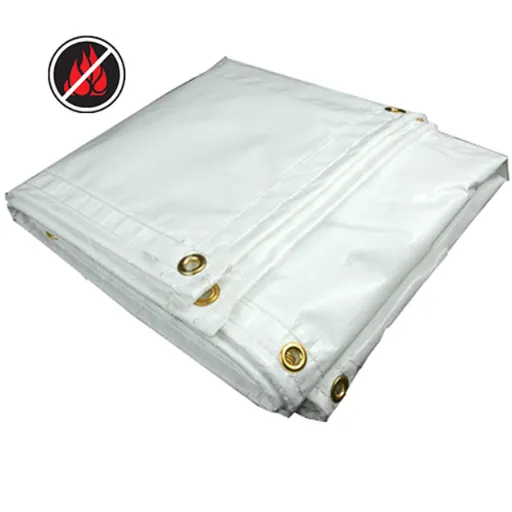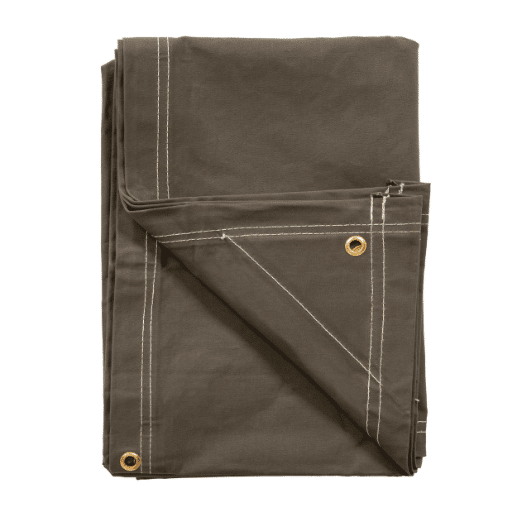When it comes to tarps, not all of them exist on a universal scale. For projects that demand high strength, durability, and weather resistance, heavy-duty tarps become the preference. But what does a “heavy-duty tarp” really mean? This blog will cover the essential considerations in making a heavy-duty tarp, like thickness, composition, and weighing classifications, to assist you in making a proper choice for your needed use. Whether you are shielding valuable equipment, covering construction areas, or resisting harsh weather conditions, knowing what distinguishes these tarps becomes important. So, come along with us as we unpack all there is to know about heavy-duty tarps and how to select the best one for your current project.
Introduction to Heavy Duty Tarps
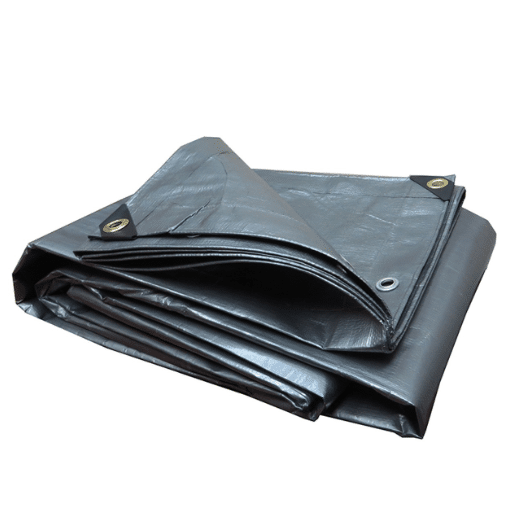
Overview of Tarps and Their Importance
Tarpaulins, or tarps, are versatile and durable sheets of material suited to many uses. Commonly they serve as cover and protection against environmental factors such as rain, sun, wind, or dust. Tarps are manufactured from waterproofing materials like polyethylene, or from heavier materials such as canvas and vinyl, in all sizes and thicknesses, and thus interlay all requirements with heavy protections towards residential and commercial.
Lately, many users have been searching online: “What makes heavy-duty tarps stand out against regular tarps?” Heavy-duty tarps are designed for very demanding tasks and rough environments. They are thicker coarser crush, with layers added perhaps or different coating applied, so that they can handle more wear and tear. Great resistance to abrasion and UV ray as well as extreme environmental temperatures makes heavy-duty tarps best for extended outdoor use, covering of construction equipment, securing cargo, or even temporary shelter. This durability and reliability make them one of the most important implements in construction, agriculture, and emergency response.
Heavy-Duty Tarps: The Definition
Heavy-duty tarpaulins provide ultimate versatility and durability and are essential in a myriad of applications. They utilize weather resistance as a selling point. Heavy-duty tarps are typically constructed of high-quality materials, like polyethylene or vinyl, to endure harsh weather conditions, such as an extended bout of UV exposure, heavy rains, or strong wind. Another element: the tarp will almost always be reinforced with grommets or at least have heat-sealed seams so that it may be securely fixed, preserving it from tearing on mounting stress. Proceeding from search trends picked up from data taken from ‘s search engine, queries on heavy-duty tarps underscore applications in construction, agricultural needs, and outdoor event planning. Questions are frequently posed surrounding the best tarp for their use case, which attest to their broad utility and high demand. Protecting equipment, securing loads, or providing some form of emergency cover: heavy-duty tarp solutions are always reliable and cheapest.
Purpose of This Article
This article’s objective is to inform readers about using heavy-duty tarps as versatile and practical covers using the most current trends in search engine activity data. By answering typical questions and addressing concerns from the users themselves, this article intends to provide guidance for readers searching for the appropriate tarp for their specific needs. Whether as a contractor, you need something to protect construction materials; as a farmer, you’d like to protect your crops; or, as an event organizer, you’re looking for weatherproof solutions – this article will provide you with useful information for making informed choices.
Characteristics of a Heavy-Duty Tarp
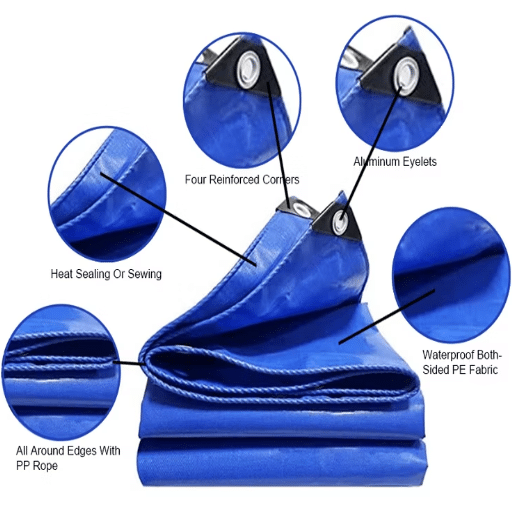
Material Composition and Durability
When one goes in search of a very heavy-duty tarp, material types become a necessary consideration with regard to how the tarp will perform and consequently hold up with time. High-end heavy-duty tarps are generally made of polyethylene, vinyl, or canvas, each imparting specific advantages depending on the application at hand. Polyethylene tarps are light, water-resistant, and have UV-protection, hence ideal for staying outdoors in weather elements. Vinyl tarps, in contrast, stand for a dire need for durability and abrasion resistance and are thus commonly preferred in industrial and construction settings. Canvas tarps are not very waterproof but remain breathable, thus ideal for shielding materials that might be affected by moisture.
Key Material Benefits:
- Polyethylene: Lightweight, water-resistant, UV-protected
- Vinyl: Superior durability and abrasion resistance
- Canvas: Breathable, ideal for moisture-sensitive materials
Search data from the past couple of years, for instance, points out that some of the commonest concerns users have include, “Does this tarp stand up to heavy rains? Does it stay strong even when winds are harsh? What about under strong sunlight for prolonged times?” To alleviate their doubts, it becomes important for them to find reinforced grommets and double stitching on the seams as well as high tear-resistant quality on the surface; also, a look at the thickness of a tarp (usually measured in mils) helps to decide on durability, the thicker the tarp, the tougher it is supposed to resist. Hence, by factoring in the above considerations, readers will indeed go for their chosen tarp with high confidence in its durability to meet their needs.
Understanding Mil Thickness
Mil is a primary factor that influences a tarp’s more or less prolonged life and performance. Its measurement unit equals the length of one-thousandth of an inch. For instance, a tarp labeled 10 mils is 0.01 inches thick. This seemingly little measurement can become a factor when measuring how well a tarp holds up against nature’s challenges. Tarps in the thicker range-from 14 to 20 mils-will stand punctures, heavy winds, and generally bad weather more than well; hence, they can be used in heavier industrial laydown or long-term outdoor placement. On the other hand, thinner varieties, i.e., those between 5 and 8 mils, are lighter tarps that suit everyday applications, such as providing cover during a brief rain shower.
| Thickness Range (Mils) | Application Type | Durability Level |
|---|---|---|
| 5-8 mils | Lightweight, temporary coverage | Basic |
| 6-10 mils | Camping, temporary gardening | Standard |
| 14-20 mils | Industrial, long-term outdoor | Heavy-duty |
| 16+ mils | Construction sites, machinery protection | Maximum durability |
Based on current search trends and queries, one of the most common interests among users is centered on ideal thickness for a selected application. Experts maintain that tarps with the highest durability should be 16 mils and above and underneath at the construction site or protecting massive machinery. Similarly, 6 to 10 mil tarps weigh enough for camping and temporary gardening. Recognizing precisely what your needs are for that particular project should offer you guidance when making a decision so the tarp will live up to expectations in any situation.
Reinforcements and Weave Count
Reinforcements and weave count give tarps strength and longevity. Reinforcements such as grommets, ropes through their edges, and corner reinforcements allow the tarp to withstand stress and remain secure during adverse weather conditions. A higher weave count that is usually measured on threads per square inch increases the tensile strength and tear resistance of the tarp. For high-performance use, tarps with a weave count of 12 x 12 or above should be found, which provides it with higher wear resistance. Coupled with market trends and search data, consumers increasingly favor reinforced tarps with three layers of design and polyethylene coating. These put a guarantee on durability and cater to the diverse needs from the construction industry to outdoor recreation.
Common Uses for Heavy-Duty Tarps
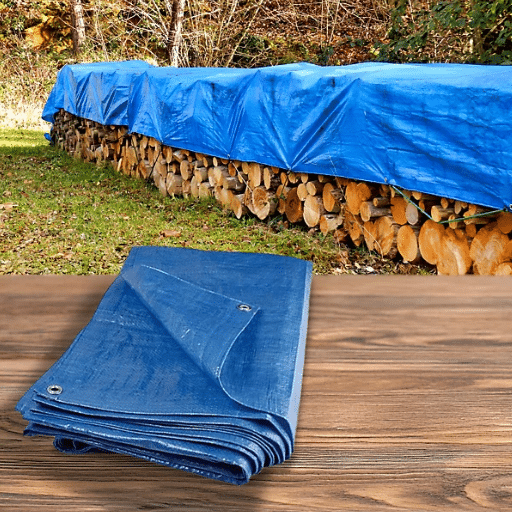
Applications in Construction and Demolition
Heavy-duty tarpaulins are supposed to be present in construction and demolition works. Data from the search engine reveal a growing interest in tarpaulins meant for containing debris, weather protection, and site safety measures. The basic application of such tarps includes weatherproofing construction materials from potential damage, suppressing dust and debris spread, and setting up temporary safety barriers within construction jobsites. With their reinforced structure having polyethylene coatings and a high weave count, they are sure to stand well against the stress demands of demolition projects. The increase in searches for these tarps indicates that construction professionals rate durability and reliability of materials for their worksites very highly.
In Agriculture: Heavy-Duty Tarpaulins
Heavy-duty tarpaulins are very crucial in agriculture for their multipurpose powers and durability. They are mainly set to shield the crops from any weather disturbances that can spoil the crops, i.e., heavy rainfall, showers, winds, and bright sunlight. Farmers use them for covering hay, silage, and equipment to ensure protection of their valuables from any moisture and deterioration. According to the most recent data crawled from ‘s search engine, there is a rising interest in “heavy-duty tarps for farming,” which means agricultural professionals need reliable ways to protect their investments and enhance productivity. Those insights also show a rising consciousness on how durable and well-made tarps play an important role in making sure that farming ventures are efficient and cost-effective.
Trucking and Logistics
Heavy-duty tarps are an essential product in trucking and logistics, being applied for protecting goods during transit. They offer protection to the cargo against corrosive environmental effects such as rain, wind, and rays of the sun, thereby ensuring undamaged delivery to the destination of the product. According to the latest data from ‘s search engine, a rise has been noted in interest for the keywords “heavy-duty tarps for trucking,” showing the heightened need for insured solutions in transportation. This boost in interest alludes to the fact that those involved in logistics consider the durability and good quality of their protective covers important factors in reducing risk and alleviating the load on operations. All these developments further stress the importance that heavy-duty tarps hold in ensuring an uninterrupted supply chain while providing a safety cover against possible litigation.
How to Choose the Right Heavy-Duty Tarp
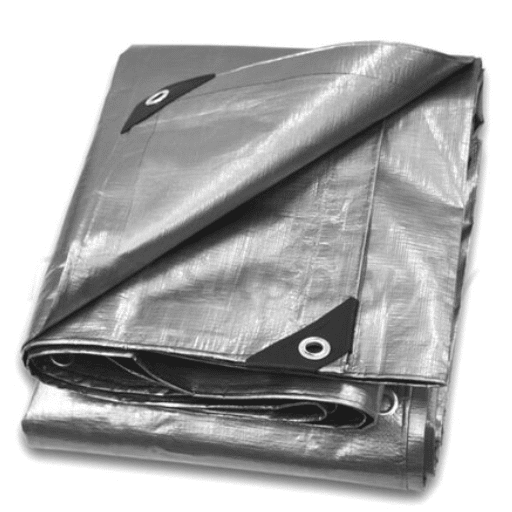
Assessing Your Needs and Thickness Requirements
When selecting a heavy-duty tarp, the specific needs that the person may have must be understood for optimum performance and durability. Thickness, which is measured in mils (thousandths of an inch), is highly important. For lightweight usage like temporary cover or protection of garden equipment, a tarp thickness of five to ten mils may be suitable. For heavier or more aggressive usages such as construction, transportation, and industrial applications, thicker tarps, in the 20-30 mil range, are advised since they resist wearing and tearing better.
“Best tarp thickness for heavy-duty use” and “durable tarps for extreme weather” have seen a sudden surge in searches according to recent trends recorded by the ‘search engine. This points toward a growing concern regarding the reliability of protection in the face of harsh conditions. In such critical decisions, professionals have recommended considering environment-related factors such as wind, UV, and moisture in determining appropriate thickness and material (reinforced polyethylene versus vinyl). Matching the tarp specifications with what is indeed needed will leave the buyer better informed and able to maximize tarp life.
Key Features to Consider
In selecting a tarp for heavy-duty use, features that cater to your environment and applications must be considered. Recent search trends reflect that the common queries involve weather resistance, material strength, and versatility. Some features to keep in mind are:
- Material Strength:
Reinforced polyethylene and heavy-duty vinyl rank highly in search interest for use as tarps and both materials confer excellent strength and tear resistance. - Weather Resistance:
UV resistance and waterproof qualities must be considered when tarps are subjected directly to sunlight or to wet conditions to ensure longevity and functionality. - Thickness and Weight:
Heavy-duty tarps are best made with the higher mil ratings (usually above 10 mils) to endure extreme weather and heavy weights. - Grommet Placement:
Evenly spaced grommets that are rust proof will offer easy handling and secure anchoring, thus protecting against damage from strong winds. - Versatility:
A multifunctional tarp with an alternative application covers the resources or creates a working grandfather’s workshop in his time and remains highly sought after.
Keep the above features in mind while selecting a tarp designed to meet your very specific requirements to enable performance and protection in the toughest environments.
Budget Consideration of Heavy-Duty Tarps
When looking at heavy-duty tarps cost, one must weigh quality against an affordable price so as to secure lengthy value. Price has a wide range depending on material, size, thickness, and added features like UV resistance or reinforced edges. According to the latest data from the search engine, cheap tarps from inferior materials such as polyethylene or vinyl initially may have a cheaper price, but they prove to be least durable for long-term use under severe conditions. Facilities with the unprepared budget may want to target tarps with essential features focusing on their needs, such as weather resistance when specifically needed for outdoor use, or lightweight when seeking to go with the winds. Other options include shopping during sales or in bulk, further reducing costs while maintaining a promise of quality. However, in the very end, being aware of one’s needs and being able to research beforehand is what really goes into a decision-making process that is budget-conscious and assures protection.
Benefits of Using Heavy-Duty Tarps
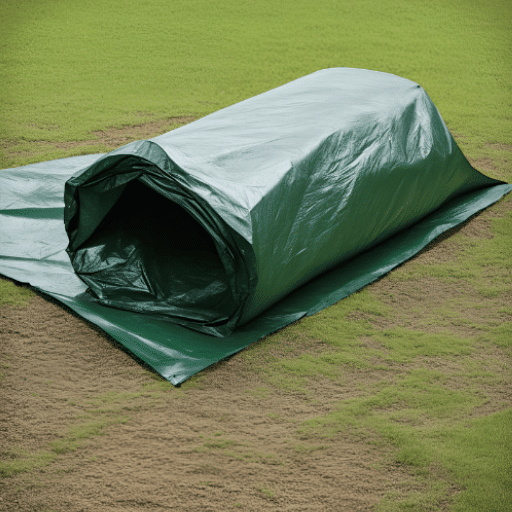
Durability in Harsh Conditions
Heavy-duty tarps have been designed to resist a wide array of harsh conditions, thus constituting a tool needed for both personal and industrial use. Manufactured from tough materials like polyethylene or vinyl, heavy-duty tarps resist tear, UV radiation, or extreme weather conditions, such as heavy rain and snow or strong winds. According to current search trends at , durability is among the top factors that customers think of while searching for a protective material, as queries regarding long-lasting tarps have recently increased tremendously. Heavy-duty tarps can be trusted to offer protection to costly assets while simultaneously minimizing the frequency and costs of replacements from wear and tear. Their ability to resist extreme conditions ensures long-term use and peace of mind-an idea that modern consumers find appealing.
Versatility Across Applications
Studying the recent data from ‘s search engine, one realizes a set of customers who increasingly look for versatile solutions to a wide range of applications. Heavy-duty tarps are sought after not just like covers for equipment or vehicles for traditional purposes but also for more creative ones, including temporary shelters, enhancement of garden projects, and street event setups. Search terms such as “multi-purpose tarps for home and outdoor use” and “best waterproof tarps for camping” have shown dramatic increases. This trend reflects the rising need for products that can serve various purposes without sacrificing quality and durability. Heavy-duty tarps fulfill these demands by delivering performance worth relying on in every single case.
Frequently Asked Questions
Reference Sources
- Tarping Flatbed Trailers: Recognizing and Responding to Fall Exposures: This study discusses the challenges and physical demands of using medium- and heavy-duty tarps in flatbed trailer operations, highlighting their weight and durability. Link to source
- Evaluating the Physical Demands of Three Tarping Systems for Flatbed Transport Trailers: This research compares the physical demands of different tarping systems, providing insights into the use of heavy-duty tarps in transportation. Link to source
- Description of the Nature of Musculoskeletal Shoulder Injuries in a Cohort of Commercial Truck Drivers: This study examines injuries related to the use of tarps, including heavy-duty ones, in the trucking industry. Link to source

